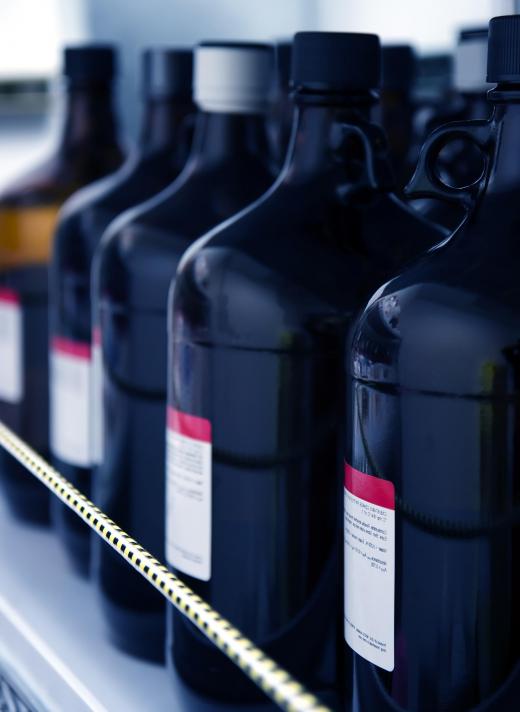Butyl acetate, also called n-butyl acetate or butyl ethanoate, is an organic compound, meaning it is a compound that has carbon. In terms of molecular structure, butyl acetate contains carbon, hydrogen and oxygen. Organically, butyl acetate is found in many fruits. When synthesized, it is used as a solvent with lacquers and as an artificial fruit flavor.
Butyl acetate contains six molecules of carbon, 12 molecules of hydrogen and two molecules of oxygen. The molar mass, which measures the mass of every molecule in a compound, is 116.16 g/mol, making it a fairly heavy compound. In appearance, butyl ethanoate is colorless, a liquid at room temperate and has a fruity odor. The melting point is -101° Fahrenheit (-74° Celsius) and the boiling point is 256°F (126°C). It is an ester, which means it is an organic compound in which a hydrogen molecule is replaced with an alkyl.

While created naturally in many fruits, most butyl ethanoate is synthesized for commercial use. It is created using a butanol isomer and an acetic acid. These compounds go through esterification and are then heated with a strong acid such as sulfuric acid.
Naturally, butyl acetate is found in pears, raspberries and pineapples, along with many other fruits. Honey bees' stingers have pheromones that contain butyl ethanoate. Products featuring this compound include milk, cheese, rum, roasted nuts and many other products that need fermentation.
As a solvent, butyl acetate is found in several products. For home use, butyl ethanoate is used in lacquers. The pharmaceutical industry also uses this compound as an extraction agent. Other minor uses include fragrances, cosmetics and in cleaning products.
The Material Safety Data Sheet (MSDS) ranks all chemicals, elements and compounds according to safety. The areas ranked on a scale of 0 to 4, with 4 being the most severe, are health, flammability, reactivity and contact. Butyl acetate's reactivity is ranked as a 1, while health and flammability are both 2, and contact is 3. This means it has a high chance of catching fire and causing health problems, and an even higher chance of burning skin when coming in contact with a person.
The MSDS also provides rankings based on possible problems that can occur when storing a substance. Butyl ethanoate's storage ranking is red. This means it can catch on fire and should be stored away from high temperatures.
